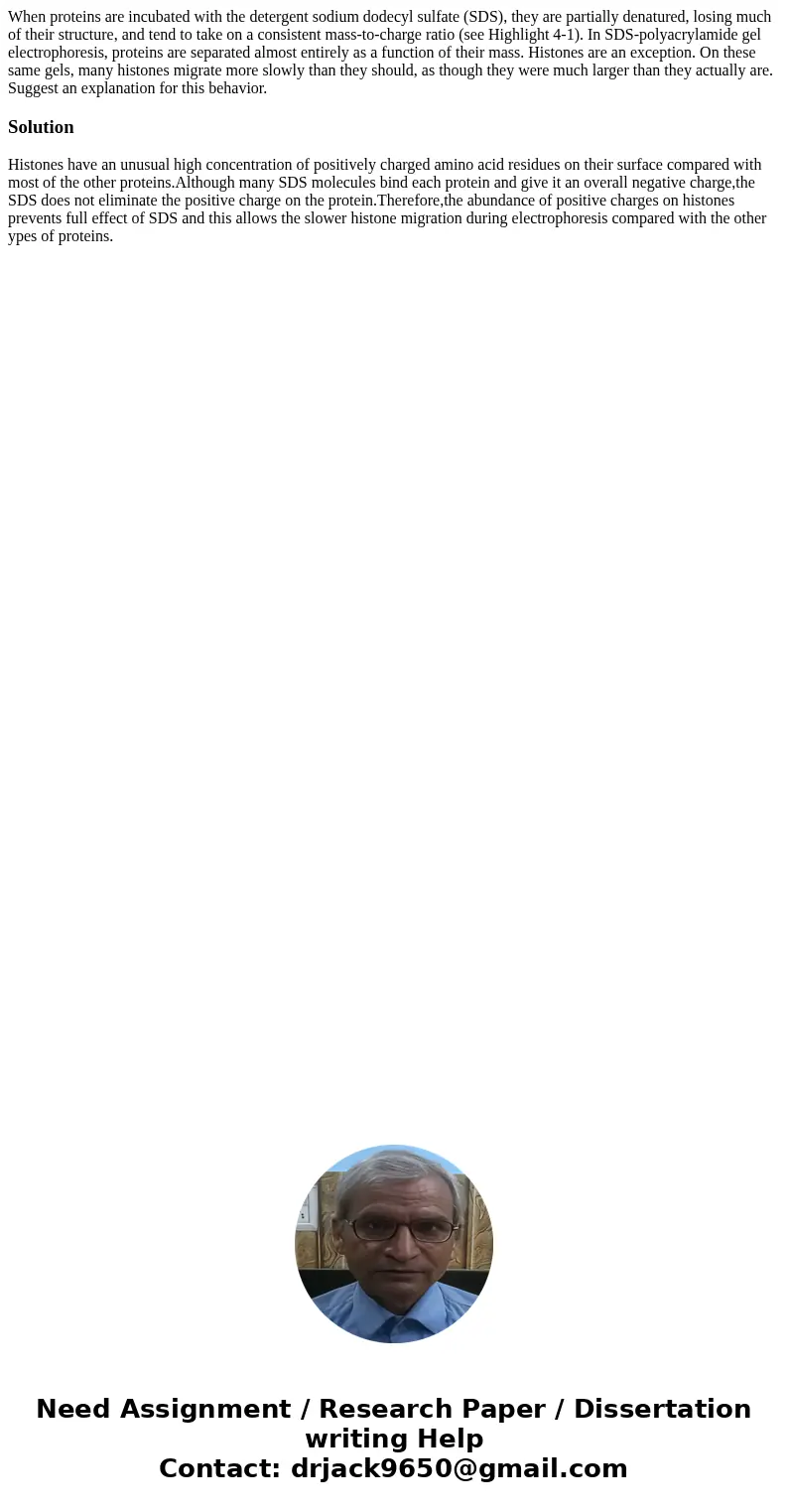When proteins are incubated with the detergent sodium dodecy
When proteins are incubated with the detergent sodium dodecyl sulfate (SDS), they are partially denatured, losing much of their structure, and tend to take on a consistent mass-to-charge ratio (see Highlight 4-1). In SDS-polyacrylamide gel electrophoresis, proteins are separated almost entirely as a function of their mass. Histones are an exception. On these same gels, many histones migrate more slowly than they should, as though they were much larger than they actually are. Suggest an explanation for this behavior.
Solution
Histones have an unusual high concentration of positively charged amino acid residues on their surface compared with most of the other proteins.Although many SDS molecules bind each protein and give it an overall negative charge,the SDS does not eliminate the positive charge on the protein.Therefore,the abundance of positive charges on histones prevents full effect of SDS and this allows the slower histone migration during electrophoresis compared with the other ypes of proteins.

 Homework Sourse
Homework Sourse